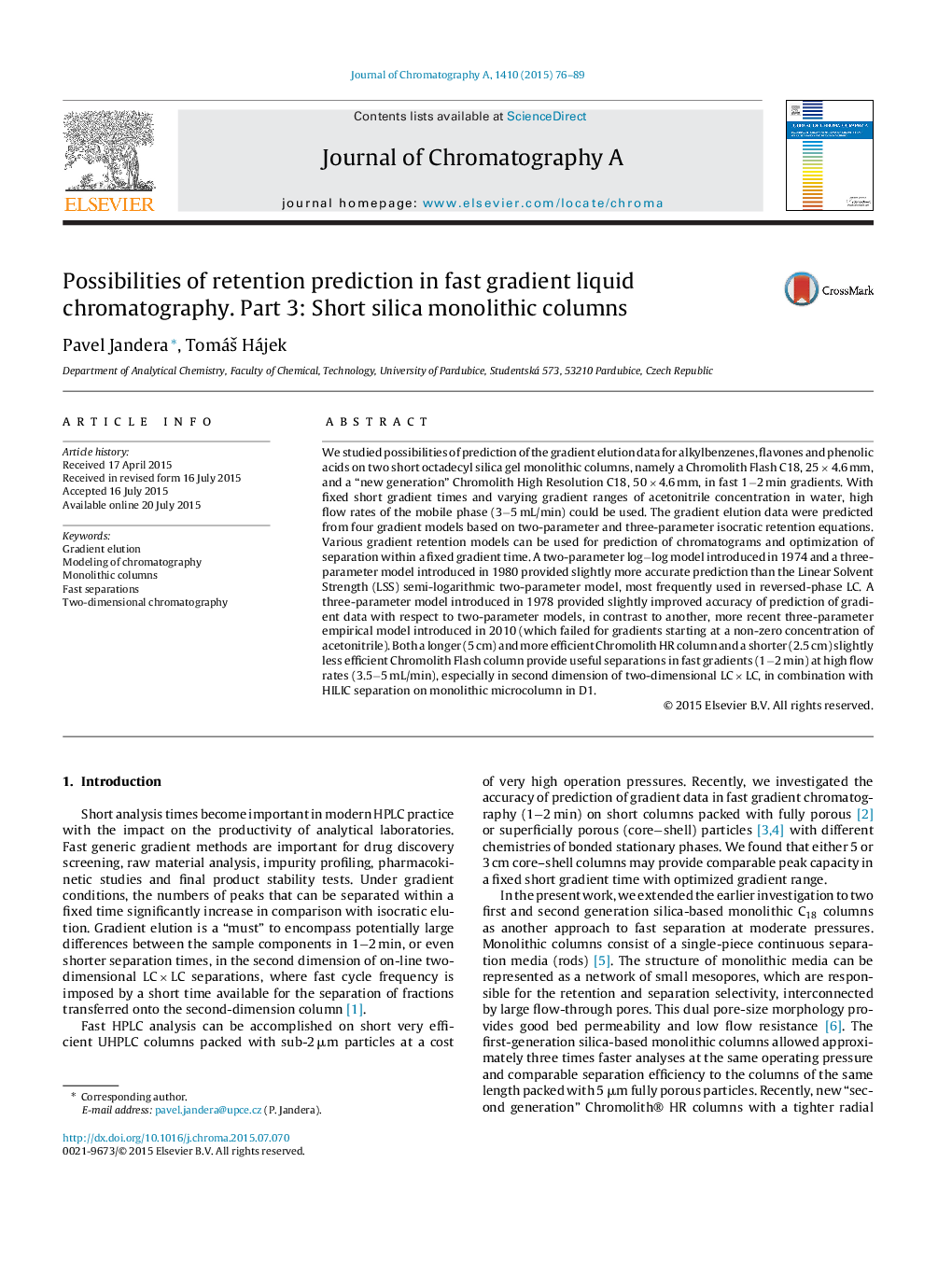| کد مقاله | کد نشریه | سال انتشار | مقاله انگلیسی | نسخه تمام متن |
|---|---|---|---|---|
| 1199204 | 1493516 | 2015 | 14 صفحه PDF | دانلود رایگان |
• Short silica-based monolithic columns can be used with fast 1 min- gradients up to 5 mL/min.
• Isocratic retention parameters were used for prediction and modeling gradient chromatograms.
• The gradient range was optimized for maximum peak capacities within a fixed gradient time.
We studied possibilities of prediction of the gradient elution data for alkylbenzenes, flavones and phenolic acids on two short octadecyl silica gel monolithic columns, namely a Chromolith Flash C18, 25 × 4.6 mm, and a “new generation” Chromolith High Resolution C18, 50 × 4.6 mm, in fast 1−2 min gradients. With fixed short gradient times and varying gradient ranges of acetonitrile concentration in water, high flow rates of the mobile phase (3−5 mL/min) could be used. The gradient elution data were predicted from four gradient models based on two-parameter and three-parameter isocratic retention equations. Various gradient retention models can be used for prediction of chromatograms and optimization of separation within a fixed gradient time. A two-parameter log−log model introduced in 1974 and a three-parameter model introduced in 1980 provided slightly more accurate prediction than the Linear Solvent Strength (LSS) semi-logarithmic two-parameter model, most frequently used in reversed-phase LC. A three-parameter model introduced in 1978 provided slightly improved accuracy of prediction of gradient data with respect to two-parameter models, in contrast to another, more recent three-parameter empirical model introduced in 2010 (which failed for gradients starting at a non-zero concentration of acetonitrile). Both a longer (5 cm) and more efficient Chromolith HR column and a shorter (2.5 cm) slightly less efficient Chromolith Flash column provide useful separations in fast gradients (1−2 min) at high flow rates (3.5−5 mL/min), especially in second dimension of two-dimensional LC × LC, in combination with HILIC separation on monolithic microcolumn in D1.
Journal: Journal of Chromatography A - Volume 1410, 4 September 2015, Pages 76–89
